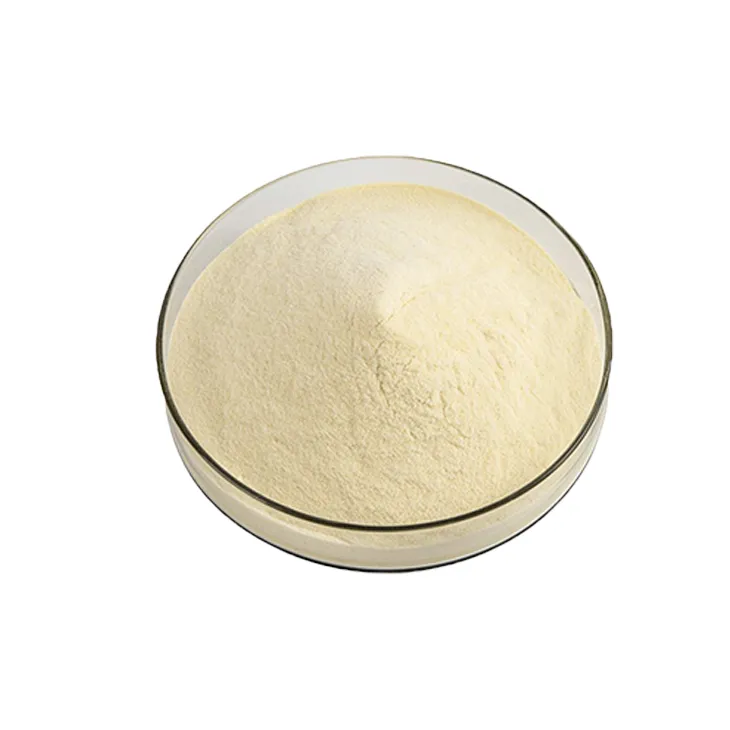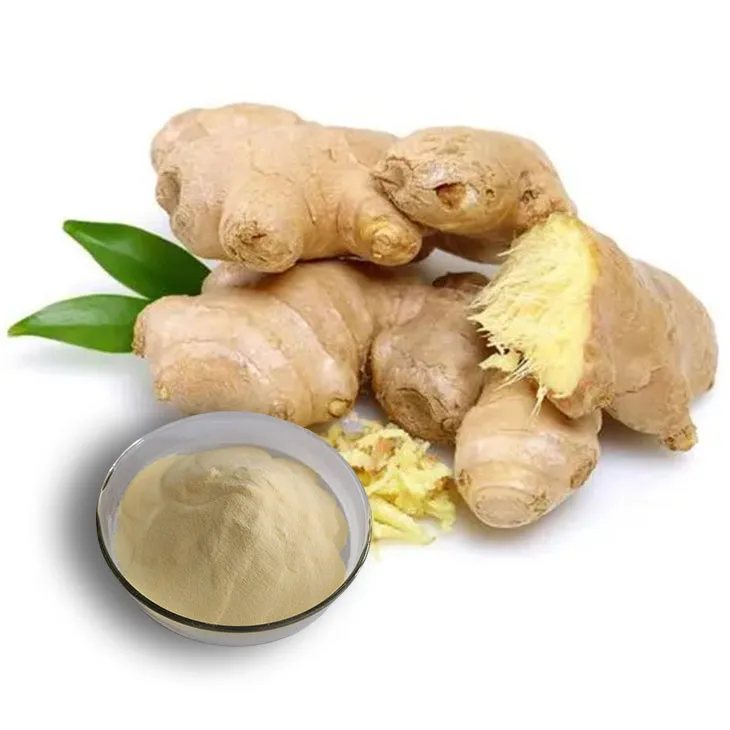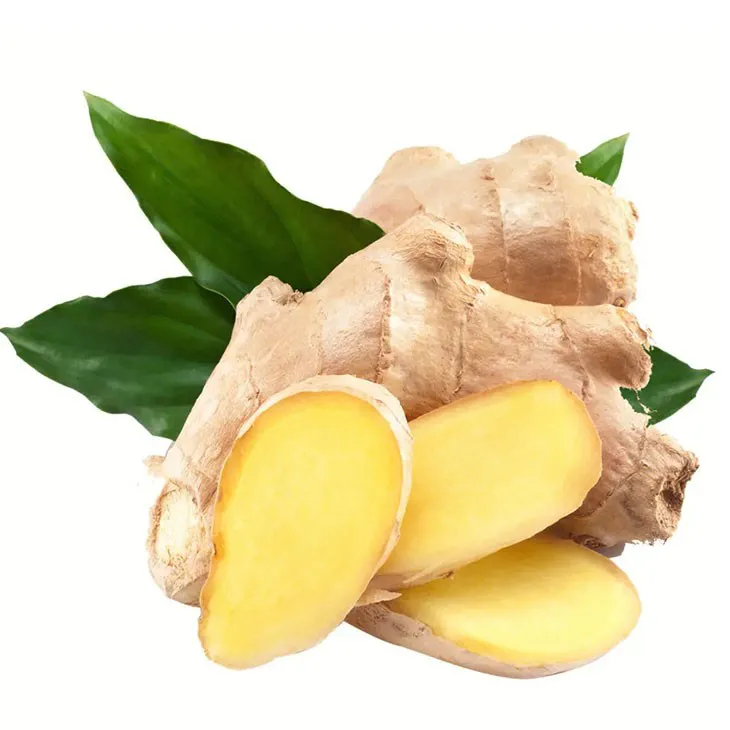- 0086-571-85302990
- sales@greenskybio.com
Supercritical Carbon Dioxide Extraction of Ginger Extract.
2024-11-30

1. Introduction
Ginger (Zingiber officinale) has been widely used in traditional medicine, cooking, and the food and beverage industry for centuries. It is known for its unique flavor, aroma, and numerous health - beneficial properties. The extraction of Ginger Extract is of great significance as it allows for the isolation and concentration of its bioactive compounds for various applications. Supercritical carbon dioxide (CO₂) extraction has emerged as a promising technique in this regard.

2. Bioactive Substances in Ginger
Ginger contains a wide range of bioactive substances. Gingerols are one of the most important components, which are responsible for the pungent taste and many of its pharmacological activities such as anti - inflammatory, antioxidant, and anti - nausea effects. Shogaols, which are formed from gingerols during drying or heating processes, also possess strong bioactivities. In addition, ginger contains volatile oils, which contribute to its characteristic aroma. These volatile oils consist of compounds like zingiberene, bisabolene, and camphene. There are also other components such as flavonoids and phenolic acids that play roles in the overall bioactivity of ginger.

3. Principles of Supercritical CO₂ Extraction
3.1 Supercritical State of CO₂
Carbon dioxide (CO₂) has a critical point at a specific temperature and pressure (31.1 °C and 7.38 MPa). Above this critical point, CO₂ enters a supercritical state, where it exhibits properties intermediate between those of a gas and a liquid. In the supercritical state, CO₂ has a high density like a liquid, which enables it to dissolve substances effectively, and a low viscosity and high diffusivity like a gas, which allows it to penetrate into the sample matrix quickly.
3.2 Solubility in Supercritical CO₂
Different components in ginger have different solubilities in supercritical CO₂ depending on their chemical structures and polarities. Generally, non - polar or slightly polar compounds are more soluble in supercritical CO₂. By adjusting the pressure and temperature of the supercritical CO₂ extraction system, the solubility of the target components can be optimized. For example, at a certain pressure and temperature, gingerols and volatile oils can be selectively extracted from ginger.

4. Advantages of Supercritical CO₂ Extraction for Ginger Extract
4.1 Selectivity
One of the major advantages of supercritical CO₂ extraction is its selectivity. As mentioned earlier, different components in ginger have different solubilities in supercritical CO₂. This allows for the separation of specific bioactive components from ginger while leaving behind unwanted substances. For instance, compared to traditional solvent extraction methods, supercritical CO₂ extraction can more effectively isolate gingerols and volatile oils without extracting excessive amounts of non - bioactive or harmful substances. This selectivity results in a Ginger Extract with a higher purity and better quality.
4.2 Mild Operating Conditions
Supercritical CO₂ extraction can be carried out at relatively low temperatures, typically around the critical temperature of CO₂ (31.1 °C). This is in contrast to some conventional extraction techniques such as Soxhlet extraction, which often requires high temperatures. The low - temperature operation of supercritical CO₂ extraction is crucial for ginger, as it contains many heat - sensitive compounds. By minimizing the exposure to high temperatures, the degradation of these heat - sensitive compounds such as gingerols and volatile oils is significantly reduced. This helps to preserve the natural bioactivity and aroma of the ginger extract.
4.3 Environmental - Friendliness
Carbon dioxide is a non - toxic, non - flammable, and inexpensive gas. After the extraction process, the supercritical CO₂ can be easily depressurized and recovered for reuse. This reduces the consumption of solvents and the generation of waste, making supercritical CO₂ extraction an environmentally friendly extraction method. In comparison, traditional solvent extraction methods often use organic solvents such as hexane or ethanol, which may pose environmental risks if not properly disposed of.
4.4 High - Quality Extract
The ginger extract obtained by supercritical CO₂ extraction is highly concentrated. Since the extraction process can selectively target the bioactive components, the resulting extract contains a high proportion of the desired substances such as gingerols and volatile oils. Moreover, as the extraction process is gentle and does not cause significant degradation of the components, the extract retains its natural aroma and bioactivity. This makes the ginger extract suitable for use in high - end products in the pharmaceutical, food, and cosmetic industries.

5. Process Parameters in Supercritical CO₂ Extraction of Ginger
5.1 Pressure
Pressure is a crucial parameter in supercritical CO₂ extraction. Different pressures can affect the solubility of components in ginger. Generally, increasing the pressure can increase the solubility of substances in supercritical CO₂. However, too high a pressure may also lead to the extraction of unwanted substances. For ginger extraction, an appropriate pressure range needs to be determined based on the target components. For example, for the extraction of gingerols and volatile oils, a pressure in the range of 10 - 30 MPa may be suitable.
5.2 Temperature
Temperature also plays an important role in the extraction process. As mentioned before, supercritical CO₂ extraction can be carried out at relatively low temperatures. However, different temperatures can influence the selectivity and efficiency of the extraction. A slightly higher temperature may increase the diffusivity of CO₂ and thus improve the extraction rate, but it may also cause some degradation of heat - sensitive components. For ginger, a temperature range of 35 - 50 °C is often considered appropriate.
5.3 Extraction Time
The extraction time affects the yield and quality of the ginger extract. Longer extraction times may increase the yield, but it may also lead to the extraction of more impurities. A balance needs to be struck between the extraction time and the desired quality of the extract. Typically, the extraction time for ginger extract may range from 1 - 3 hours depending on the equipment and the target components.
5.4 CO₂ Flow Rate
The flow rate of supercritical CO₂ affects the mass transfer rate during the extraction process. A higher flow rate can enhance the mass transfer and thus improve the extraction efficiency. However, a too - high flow rate may also cause problems such as channeling in the extraction bed. For ginger extraction, an appropriate CO₂ flow rate needs to be determined, which may be in the range of 1 - 5 kg/h depending on the scale of the extraction equipment.
6. Applications of Ginger Extract Obtained by Supercritical CO₂ Extraction
6.1 Pharmaceutical Industry
The ginger extract obtained by supercritical CO₂ extraction has great potential in the pharmaceutical industry. Due to its anti - inflammatory, antioxidant, and anti - nausea properties, it can be used in the development of drugs or dietary supplements. For example, it can be formulated into tablets, capsules, or syrups for the treatment or prevention of various diseases such as arthritis, gastrointestinal disorders, and motion sickness.
6.2 Food and Beverage Industry
In the food and beverage industry, ginger extract is widely used as a flavoring agent and a natural preservative. Its unique flavor and aroma can enhance the taste of various foods and beverages such as ginger ale, cookies, and candies. Moreover, as it contains bioactive compounds, it can also play a role in food preservation by inhibiting the growth of bacteria and fungi.
6.3 Cosmetic Industry
The antioxidant and anti - inflammatory properties of ginger extract make it suitable for use in the cosmetic industry. It can be added to skincare products such as creams, lotions, and serums to protect the skin from oxidative damage and reduce inflammation. It may also have potential in haircare products as it can stimulate hair growth and improve hair quality.
7. Challenges and Future Directions
7.1 Cost
Although supercritical CO₂ extraction has many advantages, the initial investment in equipment for this extraction method is relatively high. The high - pressure systems required for supercritical CO₂ extraction are expensive to purchase and maintain. This may limit the widespread application of this technique, especially for small - scale producers. Future research may focus on developing more cost - effective equipment or optimizing the extraction process to reduce costs.
7.2 Scale - Up
Scaling up the supercritical CO₂ extraction process from the laboratory scale to the industrial scale can be challenging. There are issues such as ensuring uniform extraction conditions, handling large volumes of CO₂, and maintaining the quality of the extract. Researchers need to address these problems to enable the large - scale production of high - quality ginger extract using supercritical CO₂ extraction.
7.3 New Applications
While ginger extract has been used in traditional applications in the pharmaceutical, food, and cosmetic industries, there is potential for exploring new applications. For example, in the field of nutraceuticals, ginger extract may be further developed for specific health - promoting functions. Additionally, research could be done on its potential applications in the field of biomaterials or in the development of new drug delivery systems.
8. Conclusion
Supercritical carbon dioxide extraction is a highly promising technique for the extraction of ginger extract. It offers numerous advantages such as selectivity, mild operating conditions, environmental - friendliness, and the production of high - quality extract. The ginger extract obtained by this method has a wide range of applications in the pharmaceutical, food, and cosmetic industries. However, there are also challenges such as cost and scale - up that need to be addressed. With further research and development, supercritical CO₂ extraction of ginger extract is expected to play an even more important role in the future.
FAQ:
What are the advantages of supercritical carbon dioxide extraction for ginger extract?
Supercritical carbon dioxide extraction for ginger extract has several advantages. Firstly, it has selectivity, which can selectively extract different components from ginger based on their solubility in supercritical CO₂, ensuring a purer extract and reducing impurities. Secondly, it can be carried out at relatively low temperatures compared to conventional extraction techniques, minimizing the degradation of heat - sensitive compounds in ginger. The resulting extract is highly concentrated and retains its natural aroma and bioactivity, making it suitable for high - end products in different sectors.
How does supercritical CO₂ extraction ensure the purity of ginger extract?
The selectivity of supercritical CO₂ extraction is the key to ensuring the purity of ginger extract. It can target specific components in ginger according to their solubility in supercritical CO₂. This means that it can separate the desired components from other substances effectively, leaving behind unwanted impurities and thus resulting in a purer ginger extract.
Why is low - temperature extraction important in supercritical carbon dioxide extraction of ginger?
Low - temperature extraction in supercritical carbon dioxide extraction of ginger is important because ginger contains heat - sensitive compounds. By carrying out the extraction at relatively low temperatures, the degradation of these heat - sensitive compounds can be minimized. This helps to preserve the natural properties of the ginger extract, such as its aroma and bioactivity.
What makes supercritical carbon dioxide extraction stand out from other extraction methods for ginger?
Supercritical carbon dioxide extraction stands out from other extraction methods for ginger mainly due to its selectivity and low - temperature operation. The selectivity allows for the extraction of specific components, and the low - temperature process helps in maintaining the integrity of heat - sensitive compounds in ginger. These features result in a high - quality ginger extract that retains its natural properties better than extracts obtained from other extraction methods.
What are the potential applications of the ginger extract obtained by supercritical CO₂ extraction?
The ginger extract obtained by supercritical CO₂ extraction is highly concentrated and retains its natural aroma and bioactivity. It can be used in various sectors for high - end products. For example, in the food industry, it can be used as a natural flavoring agent. In the pharmaceutical and cosmetic industries, it may be used for its bioactive properties such as antioxidant, anti - inflammatory, etc.
Related literature
- Supercritical Fluid Extraction of Ginger: A Review of Process Optimization and Bioactive Compounds"
- "Supercritical Carbon Dioxide Extraction of Gingerols from Ginger: Process Parameters and Product Quality"
- "Advances in Supercritical Fluid Extraction of Ginger Bioactive Compounds for Functional Food Applications"
- ▶ Hesperidin
- ▶ citrus bioflavonoids
- ▶ plant extract
- ▶ lycopene
- ▶ Diosmin
- ▶ Grape seed extract
- ▶ Sea buckthorn Juice Powder
- ▶ Beetroot powder
- ▶ Hops Extract
- ▶ Artichoke Extract
- ▶ Reishi mushroom extract
- ▶ Astaxanthin
- ▶ Green Tea Extract
- ▶ Curcumin Extract
- ▶ Horse Chestnut Extract
- ▶ Other Problems
- ▶ Boswellia Serrata Extract
- ▶ Resveratrol Extract
- ▶ Marigold Extract
- ▶ Grape Leaf Extract
- ▶ blog3
- ▶ blog4
-
Chinese Hawthorn Extract Powder Suppliers.
2024-11-30
-
The best Tongkat Ali extract in nature.
2024-11-30
-
Chinese Ginger Extract Powder Suppliers.
2024-11-30
-
Organic non - transgenic black rice extract.
2024-11-30
-
Ginseng Root Extract
2024-11-30
-
Uridine-5'-monophosphate Disodium salt
2024-11-30
-
Sugarcane Extract
2024-11-30
-
Artichoke Extract
2024-11-30
-
Ivy Extract
2024-11-30
-
Boswellia Serrata Extract
2024-11-30
-
Bilberry Extract
2024-11-30
-
Dan Shen Root Extract/Salvia Root Extract
2024-11-30
-
Yohimbine Bark Extract
2024-11-30
-
Coix Seed Extract
2024-11-30





















